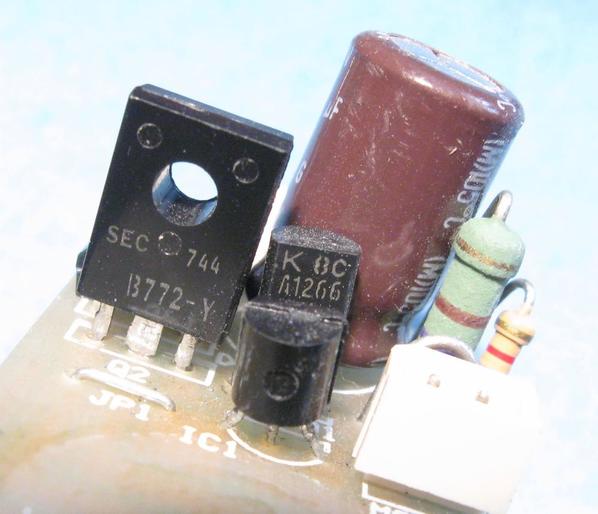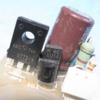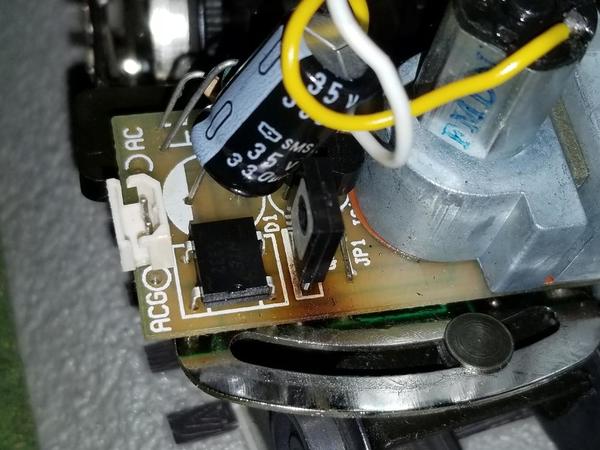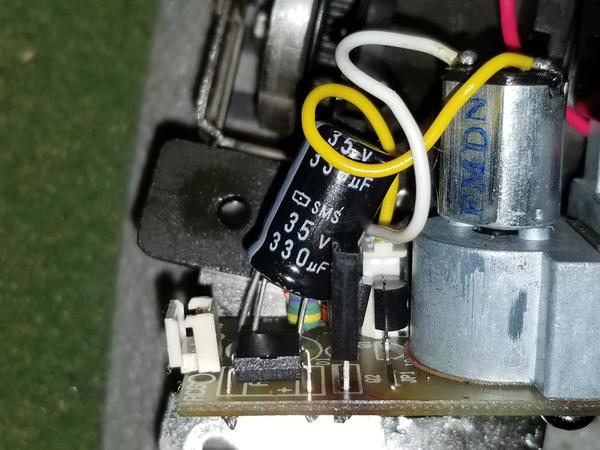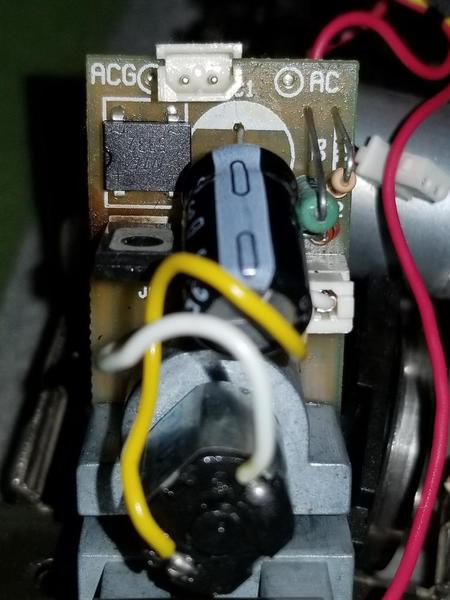I bought a used MTH B&O 2-6-0 engine with Proto-Sound that was made in the late 1990's as a Christmas present for my son (and me, too!) Overall, it is in excellent condition, however the smoke unit did not function. I replaced the battery with a new 8.4v NiMh and other than the usual problems associated with a CW-80 transformer, it performed flawlessly. All sounds and other functions worked fine.
When I first received it, I noticed an integrated circuit chip crushed into the foam cradle in the box, but didn't know what it could be. I opened up the tender to replace the battery and also looked under the shell of the locomotive, I noticed there was a burn mark on the circuit board for the smoke unit and also that a transistor was loose. After Christmas, when we first tried it out and realized the smoke wasn't working, I took it apart. The transistor fell off with little effort and was also cracked, fortunately the printing was still visible, unfortunately it appears to be hard to find. It's a B772-y unipolar junction transistor. I tried to cross reference it and our local Fry's Electronics had what seemed to be a replacement, an NTE254 PNP Darlington, but it's a bipolar junction transistor.
The IC chip I found, turned out to be a broken bridge rectifier that must have been very, very poorly soldered to the same IC board. There was no solder on its legs and all four solder points on the board were intact. I found a direct replacement for it and the smoke unit worked great! Maybe even too good! It produces a huge amount of smoke!
So my question is; should a proto-smoke 1.0 unit have two levels of smoke production? Given the way the circuit board is printed, one circuit goes directly from the bridge rectifier to one smoke resistor, the other circuit goes through the transistor then to the other smoke resistor.
I will not pretend to be knowledgeable in all things electronics, so for those electronics wizards, should I search out an actual B772-Y transistor for the smoke unit? If there is supposed to be two levels of smoke, should this do the trick?
Sorry for such a long first post, but I would appreciate any answers offered. Thank you!
Tom




